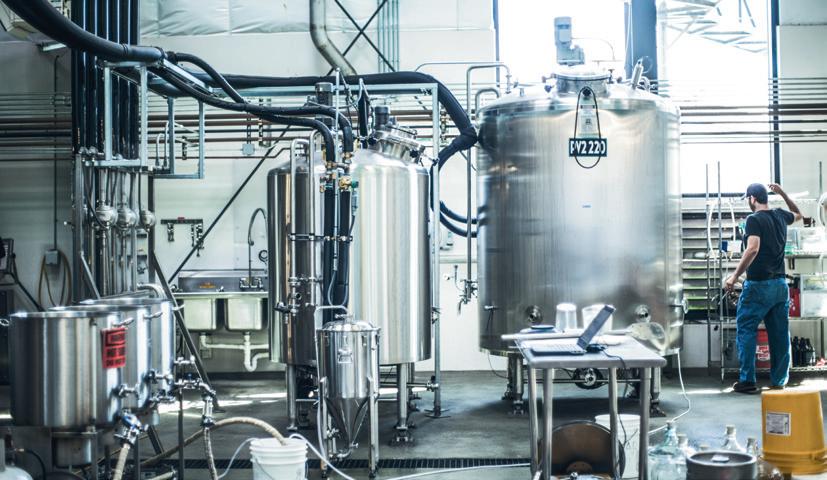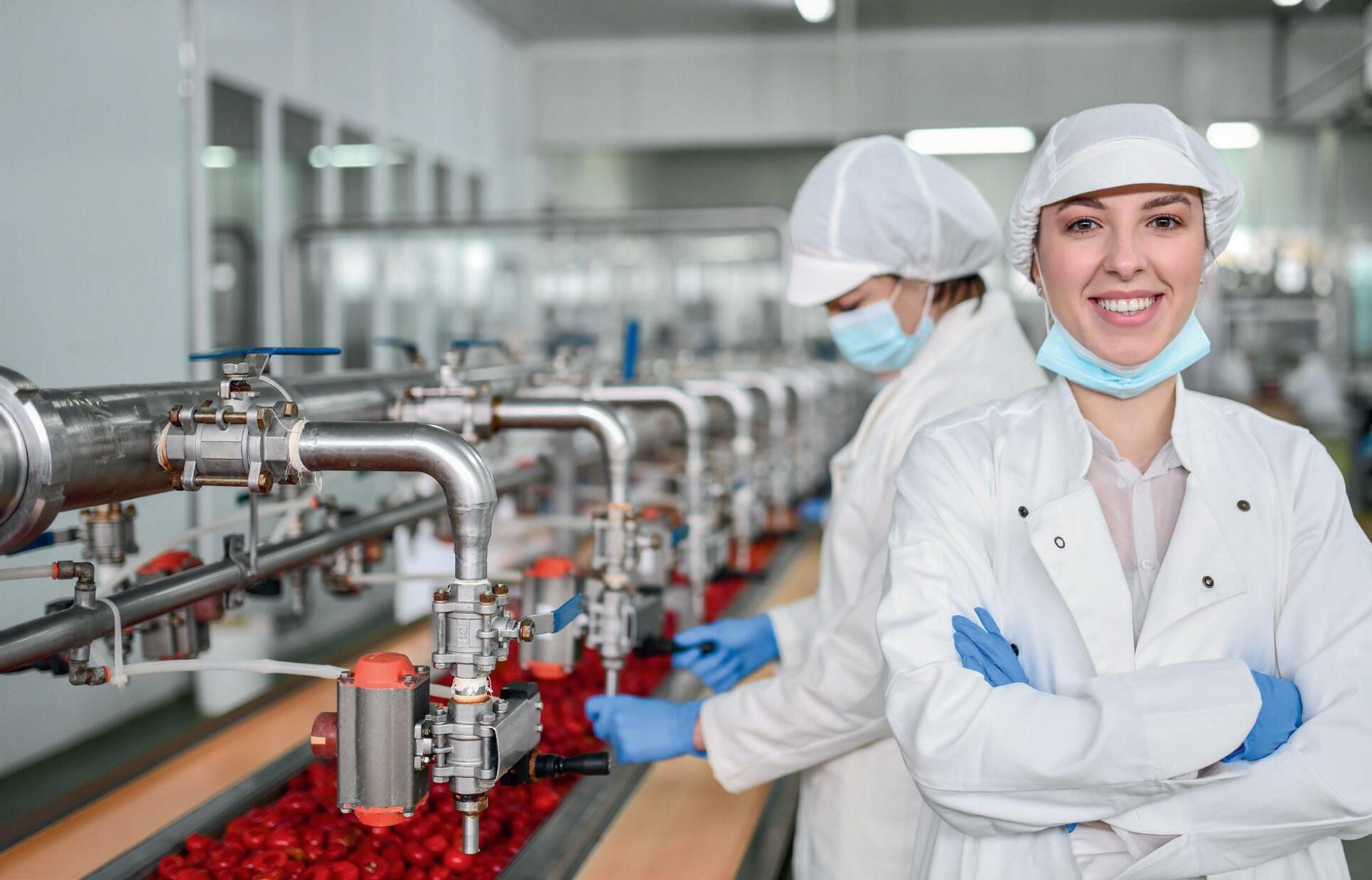
21 minute read
New initiatives to address skills and labour shortages
The recent Australian Jobs and Skills Summit has brought together industry, unions and other stakeholders to develop initiatives to help build a bigger, better trained and more productive workforce. As the food and beverage manufacturing industry has not been immune from the labour shortages across Australia, this has been welcomed by the sector.
As a result of the summit, the Albanese government has agreed to 36 immediate initiatives including the following: 1. An additional $1 billion in joint federal–state funding for fee-free TAFE in 2023 and accelerated delivery of 465,000 fee-free TAFE places. 2. A one-off income credit so that Age Pensioners who want to work can earn an additional $4000 over this financial year without losing any of their pension. 3. An increase in the permanent Migration Program ceiling to 195,000 in 2022–23 to help ease widespread, critical workforce shortages. 4. Extending visas and relaxing work restrictions on international students to strengthen the pipeline of skilled labour, and providing additional funding to resolve the visa backlog. 5. Improving access to jobs and training pathways for women,
First Nations people, regional Australians and culturally and linguistically diverse people, including equity targets for training places, 1000 digital apprenticeships in the
Australian Public Service and other measures to reduce barriers to employment. 6. Modernising Australia’s workplace relations laws, including to make bargaining accessible for all workers and businesses. 7. Amending the Fair Work Act to strengthen access to flexible working arrangements, make unpaid parental leave more flexible and strengthen protection for workers against discrimination and harassment.
In further summit outcomes, the government, states and territories have a list of areas for further work, including to: • examine ways to build scale in local manufacturing; • continue to work with stakeholders to expedite the development of new remote employment service models; • consider possible improvements to Modern Awards and the National Employment Standards; • examine the potential for industry sponsorship of skilled migrants; • explore options to improve the apprenticeship support system and drive-up completions.
Mars Wrigley Australia is a local manufacturer that employs more than 700 people across three sites in Melbourne, Ballarat and Asquith. According to Andrew Leakey, General Manager, Mars Wrigley Australia, his company (like many others) has been feeling the impact of broader labour shortages, particularly within the manufacturing and technical sector.
“The discussions at this year’s Jobs and Skills Summit are a step in the right direction to addressing skills shortages, boosting productivity and creating more opportunities in more corners of Australia. We know these challenges require a collective effort from government, industry and other parties involved, and need to be addressed with greater urgency.
“In the modern manufacturing environment we see strong demand for technical roles across engineering and R&D at our regional factories, and we believe addressing labour shortages in these key areas will create more employment opportunities and boost economic participation.
“We also believe it is critical to invest in people and technology to increase productivity in Australia’s key sectors, including manufacturing, where innovation in technology can drive productivity growth and create demand for workers with high levels of digital and data literacy. Ensuring both businesses and employees are equipped to tackle these new opportunities is imperative as Australia seeks to boost productivity and participation.”
Many other ideas and suggestions raised at the summit will be explored further over the next 12 months as part of the Employment White Paper.
Improving milk digestibility
Naturo, the company responsible for potential for increased absorption by the Haelen milk processing technology — body. which gives fresh milk a 60-day shelf life With 68% of the global population — has achieved another milk development, experiencing some form of difficulty this time for digestibility. in consuming milk, the results mean
Consumer trials and recent that more people may be able to enjoy Commonwealth Scientific and Industrial the health benefits of milk without the Research Organisation (CSIRO) research adverse side effects. It will also provide validation have said that milk processed opportunities for sports nutrition and using the Haelen method results in recovery and health and wellness markets 100% fresh, natural milk that is twice as due to the way it naturally hydrolyses milk digestible as processed cow’s milk. This whey proteins. is due to the treatment of whey proteins, The product has been formally which can often be problematic. The approved by Australia’s state regulators proteins are broken down further allowing for domestic sales, and export registration for easier and faster digestion, as well as is due to be formalised in October 2022. enhanced nutrient absorption. Founder and CEO Jeff Hastings
The CSIRO research followed a 2021 Jeff Hastings Founder Haelen (pictured), said: “This latest digestibility consumer trial which showed that two- Technology and Naturo. finding is an incredible market thirds of trial participants, who normally breakthrough and has seen us shift our experienced an adverse reaction to cow’s milk, found that the business strategy to allow worldwide Haelen Technology alternative eliminated or reduced the reaction. partnerships and licensing agreements, rather than solely focus
The CSIRO results confirmed that Haelen processed milk on processing and exporting fresh milk from our South East made the milk’s nutrients more bio-accessible, providing the Queensland production facility.”
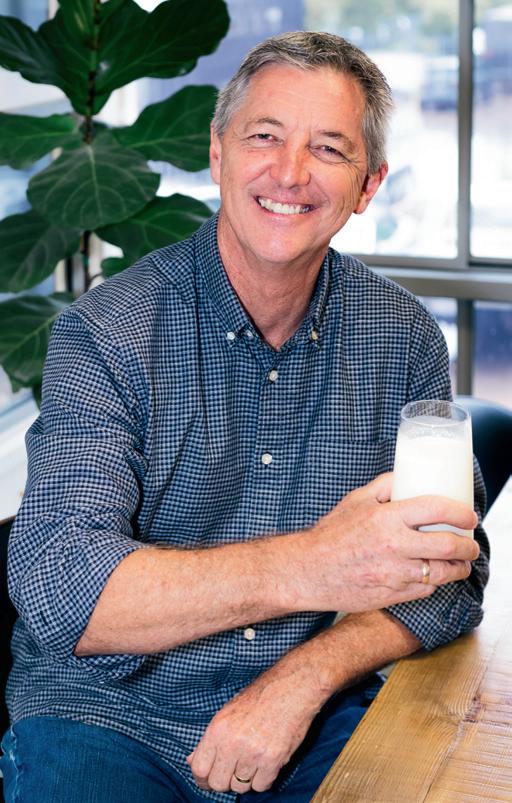

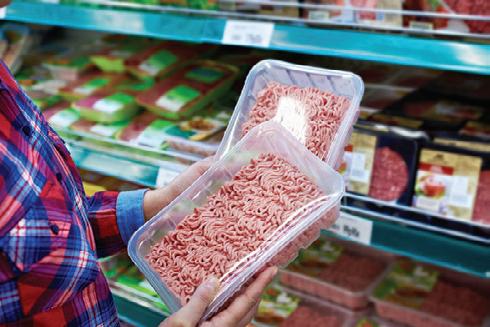
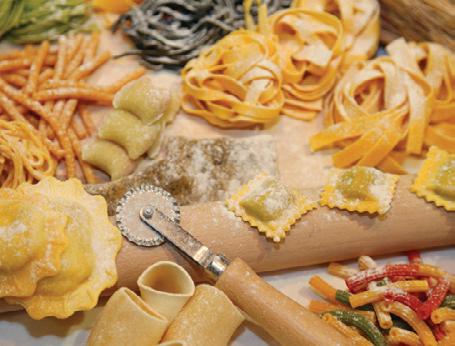
For All Your MAP Gases and Dry Ice Needs For Food Packaging
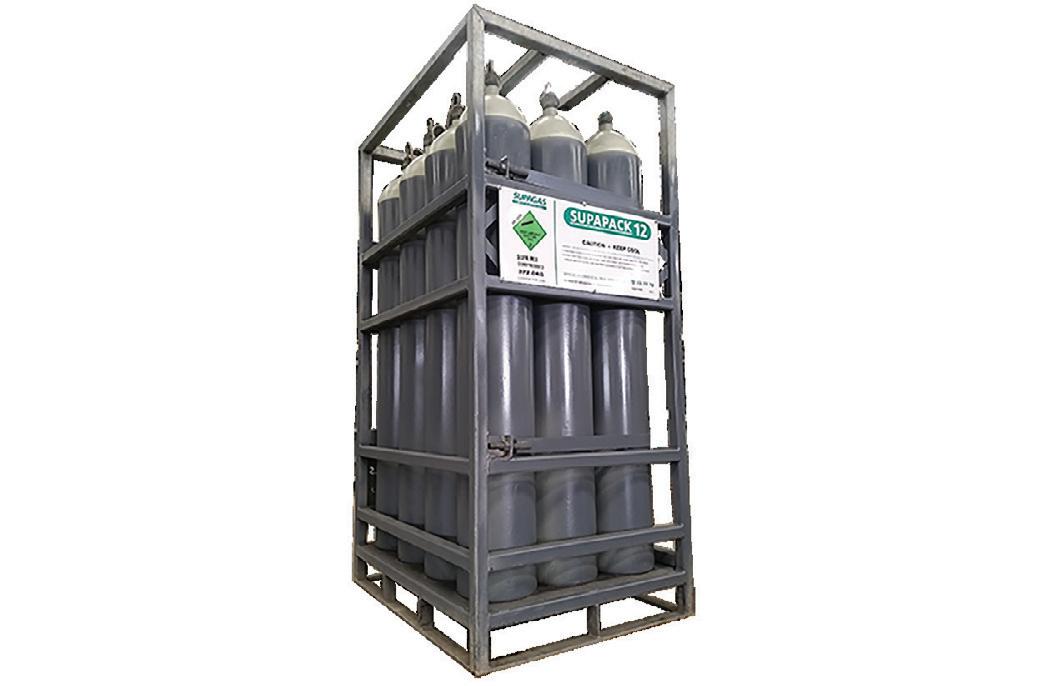
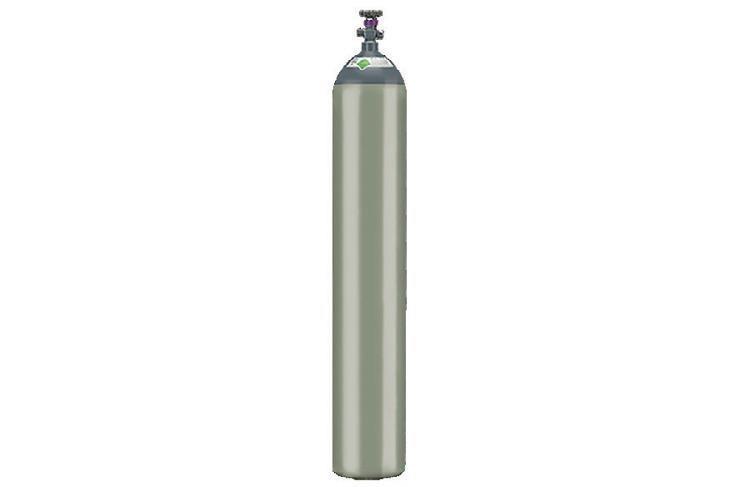
• SupaMap • Dry Ice • Carbon Dioxide • SupaMix
What an IMPAQT on poultry processing
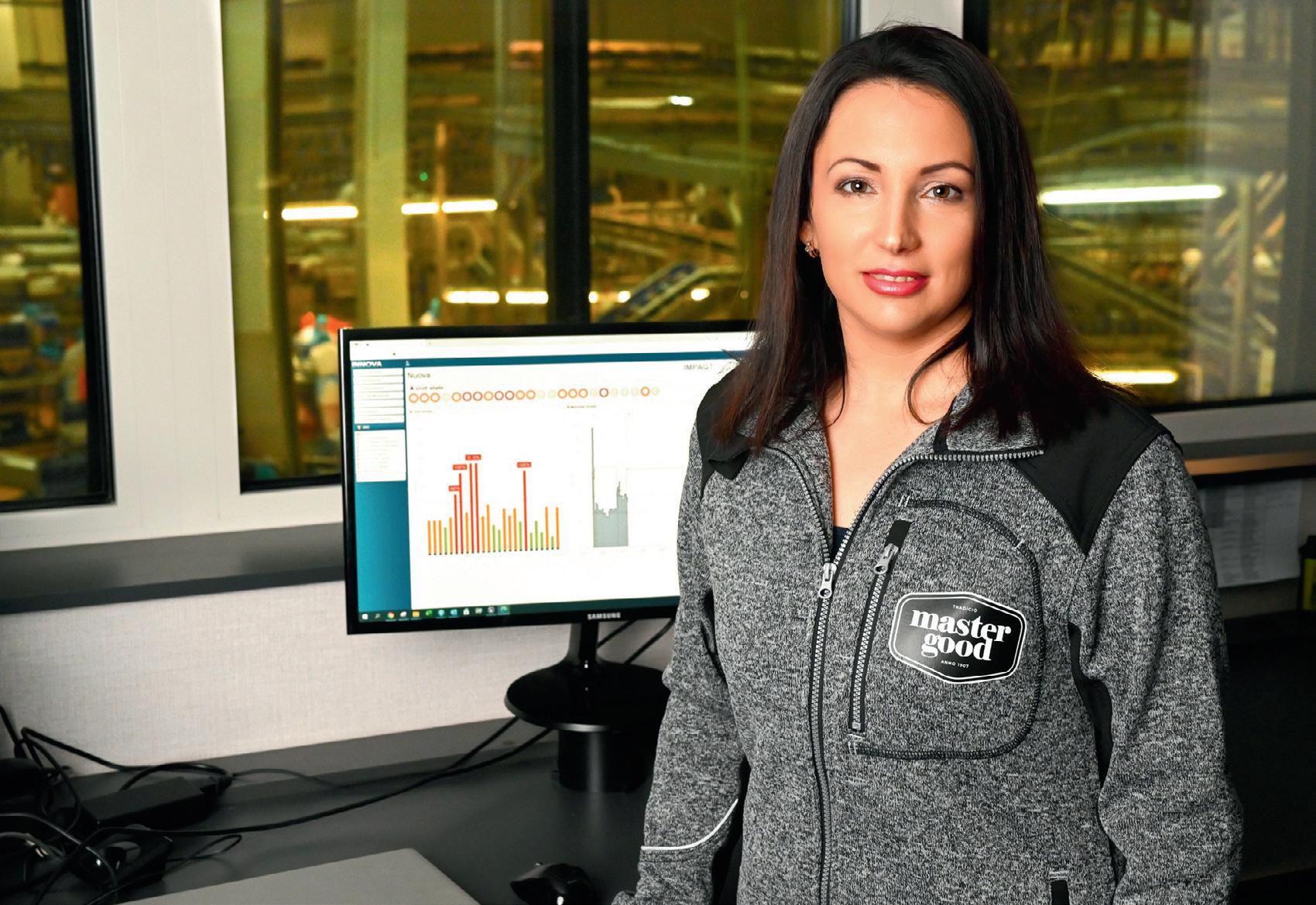
Nóra Moldvai-Villányi
The primary processing line for Hungarian poultry processor Master Good runs at a speed of 15,000 bph (250 bpm), making it impossible for the human eye to measure efficiency. The company has now installed Marel’s IMPAQT software to help improve the efficiency of its equipment.
Master Good’s Production Controller, Nóra MoldvaiVillányi, said that prior to the software implementation, the company didn’t have a clear view of the performance of its equipment. “The judgments of our technical and production people were sometimes contradictive and subjective,” she said.
“IMPAQT gives us a realistic, real-time overview of the performance of the primary line. But it is more important that it can also help us focus on a certain issue, gather all the necessary data and find the root cause in real time. Having several product detection points in the line, we can instantly see where most product losses occur. We can decide how to prevent this loss. And we can verify the results of our preventive measures.
“However, IMPAQT is not a tool to solve sudden incidents. We use it as a monitoring tool for trends, which alerts us if performance drops in a particular area. This means we can react faster and more efficiently. At the moment, our technical department benefits most from IMPAQT. The Nuova, LineLink DE and EC dashboards are a continuous help for them. They constantly check the screens, spot the issues and react quickly if the performance of any unit drops.”
Moldvai-Villányi suggested that the software has already resulted in a better performance for the company. “Gizzards, hearts and livers are very important for us. We do our utmost to prevent the loss of these products. As this process starts with the Nuova eviscerator, it is crucial that we can closely watch its operation by checking the performance dashboard. This screen not only shows performance — which has considerably improved overall — but also tells straight away which unit is not performing well and needs to be repaired or replaced as soon as possible.
“Especially when we look at maintenance, IMPAQT makes our life easier. Besides the dashboards, the Bad Shackle report is also a ‘must see’ report. Every shackle transfers many birds every day. One defective shackle will cause product loss each time the conveyor goes around. It’s therefore important to recognise broken or damaged shackles. In the so-called Bad Shackle report, our maintenance department can easily identify bad shackles in the line and replace them as soon as possible.” Marel www.marel.com
3-in-1 modular package
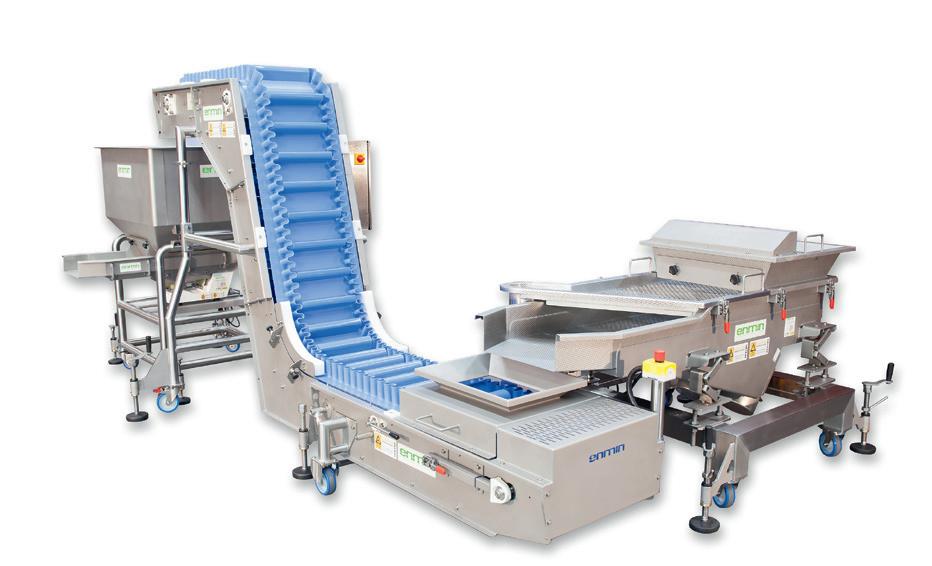
Enmin is combining three of its most popular modular products into a single automation package. It’s an in-house designed combination of a storage screener, Mi-CON elevating conveyor and hopper feeder that is designed to completely automate a production line.
Enmin’s storage screener provides a simple but effective way of storing, screening and sizing products to ensure uniformity. The base of the tray has a fixed or removable section of holes, slots or parallel bars. As the material moves over this section, undersized or oversized products can be removed before they enter the production stream.
The compact, electromagnetic hopper feeder is engineered to suit a variety of food production facility needs. The robust yet compact unit holds bulk dry food products and ingredients and consistently delivers the product at a metered rate.
The hopper feeder can reduce manual handling and food wastage by hygienically storing and delivering product to a secondary process and can be customised to meet a user’s exact requirement. It requires minimal maintenance and is built to withstand the demands of food production and handling.
For maximum flexibility it can be updated as required with a range of options for futureproofing the equipment.
The elevating conveyor is one of Enmin’s most recent product developments. The Mi-CON (Modular Incline Conveyor System) is a hygienically designed full washdown system with multiple standardised components. The running gear and all components are constructed with 304 stainless steel and FDA approved.
As with all Enmin products, the three components are designed and manufactured in Australia. They have been constructed to meet the toughest WHS standards.
For production ease, all three components can be electrically connected so they are ‘talking to each other’, further minimising operator workload. They can also be easily moved to other production lines providing maximum flexibility.
Enmin Pty Ltd
www.enmin.com.au

Award winning source of ingredients
TransChem has been an award winning source of ingredients for over 25 years for nutraceuticals and pharmaceuticals.

Now the food & beverage sector can benefit from the premium value, quality natural ingredients that we independently source from around the globe. We know the value of key natural ingredients, which will enhance the health and wellness offering in your product. Contact us now to find out more about the difference we can make sourcing and distributing for you: +61 2 9887 1688 or visit transchem.com.au/food-beverages
SUITABLE FOR: DAIRY I BAKERY I CEREAL I VEGAN I SPORTS NUTRITION I BEVERAGES I CULINARY I SNACKS
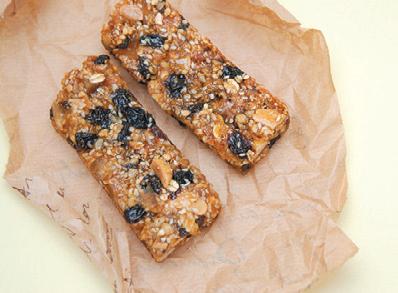

Modernising a dairy plant
The German dairy plant Milchwerk Crailsheim-Dinkelsbühl eG processes around 150,000 tons of raw milk from cooperative suppliers every year, and prepares it to produce Balkan cheese, pasta filata cheese Kashkaval and grill cheese.
In June 2022, GEA commenced modernisation of the dairy’s milk treatment area. Its associated cheese dairies are then supplied with pretreated — purified, heated and mixed — milk. GEA will also further advance the digitalisation of the dairy, with completion planned for early 2023.
The heat treatment of raw milk is immensely important for hygienic cheese production, but at the same time it requires a lot of energy if the technology and process integration are not perfectly designed.
“Energy efficiency is our top priority when we think about the future of our dairy,” said Josef Vögele, Managing Director of Milchwerk Crailsheim.
Key technology and components at the dairy, such as skimmers, valves and plate heat exchangers, are all supplied by GEA. The next step will see GEA work with the dairy to develop a comprehensive energy and heat quantity concept for the entire plant, thereby unlocking CO2 savings potential.
“In Crailsheim they face similar challenges to many other small and medium-sized dairies: sustainability and digitalisation are taking hold — and they can only be implemented by using efficient high-performance technologies and consistent process planning,” said Steffen Rathmann, Managing Director of GEA TDS. “To tackle these issues, which are so omnipresent in the industry, we develop the process and technology design based on the specific conditions onsite. It makes us proud to have the opportunity to set up the technical backbone for the future success of our customers like Milchwerk Crailsheim.”
In addition to the above technology, the dairy opted to record the plant history via GEA Codex Plant Playback. This automation solution analyses industrial processes batch by batch as a software-based video recorder. It can reveal dependencies, errors and their causes, which can be easily fixed. The software animates SCADA Historian data in real time or time lapse. This is designed to improve both production as well as product and process safety.
In order to connect the cheese dairy to the machine room in Crailsheim, GEA will also technologically modify various tank farms, fundamentally rebuilding all valve blocks and the cheese milk tank farm. To ensure high microbiological quality, the dairy will install a new pasteuriser with surplus cream cooling and two new thermisers. During the project, the existing CIP station will be upgraded. An additional skimming separator is equipped with GEA proplus technology, which is designed to increase protein yield and reduce freshwater consumption through longer emptying intervals for the milk separator. The cheese production technology is complemented by two new calcium chloride stations which increase yield and improve product quality through stabilised rennet gel.
The modernisation of the dairy will take place without stopping production. GEA Group www.geagroup.com.au
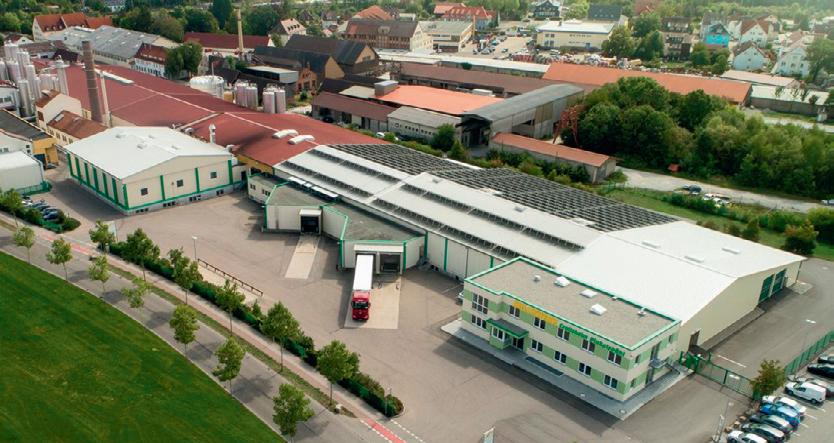
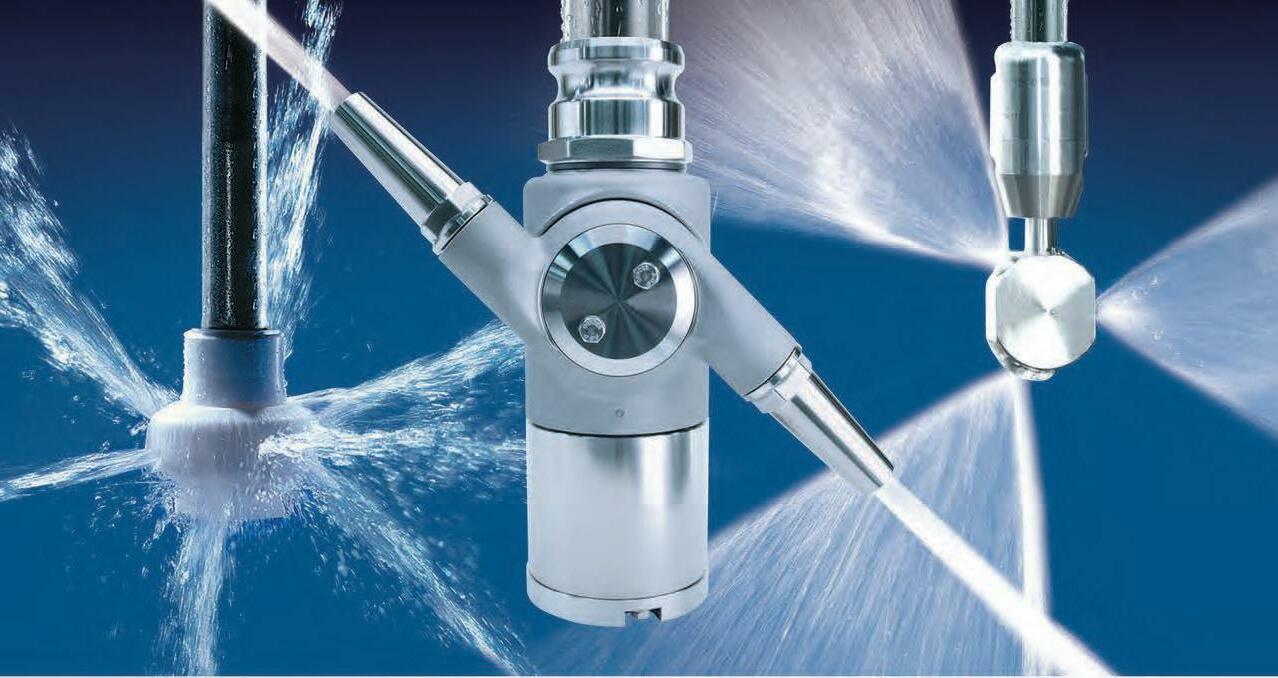
Top four tips for selecting the ideal tank-cleaning nozzle
Tanks and mixers are extensively used during the production processes in most food manufacturing facilities. While the products in the tanks vary, the challenge remains the same: How to clean your tank efficiently?
Spraying Systems are world leaders in tank cleaning technology and our Australian-based team and fabrication facility can custom design and create the best solution for your business.
Based on our experience in the industry and feedback from customers, we have separated four main aspects that should be taken into consideration when choosing your ideal tank-cleaning nozzle:
1. Time
The available time for cleaning your tank is crucial for selecting the equipment you need. A long cleaning process has a big impact on productivity, but a short cleaning process might not deliver the required results — and is likely to be less sustainable.
2. Temperature
Hot water is a known solution for removing residues. But beware! Always observe the proper temperature for your equipment. The costs involved in heating the liquid is another important factor to take into account. 3. Chemicals
With some types of residues, it is necessary to resort to chemicals for better cleaning results. Therefore, it is important to pay attention to the material of your equipment and its resistance to corrosive and acid products.
4. Impact
When we talk about tank cleaning, the impact is the aspect that will bring more results and savings to the cleaning. Selecting the ideal spray impact reduces the use of chemicals, provides a shorter cleaning cycle and, consequently, limits water and energy usage.
Selecting the ideal equipment for your operation
At Spraying Systems we have a large range of tank and tote cleaning solutions. Whether your operations require gentle rinsing or the removal of tough residues, we have the right product for any tank measuring up to 30 m in diameter.
When choosing the equipment for your operation’s tanks, you should ideally look for a model that will perform efficient cleaning in the least amount of time, with the least amount of resources, and with a high impact.
The basics sound very simple but unfortunately, we regularly replace inefficient tank cleaning solutions. If you want to make sure that you’re getting the most out of your tank cleaning solution, be sure to contact your local spray specialist. Our experts can help you understand the characteristics of your tank cleaning operation and help you meet your goals.
For more information, email sales@ spray.com.au or call 1300 079 998.
Spraying Systems Co Pty Ltd www.spray.com.au
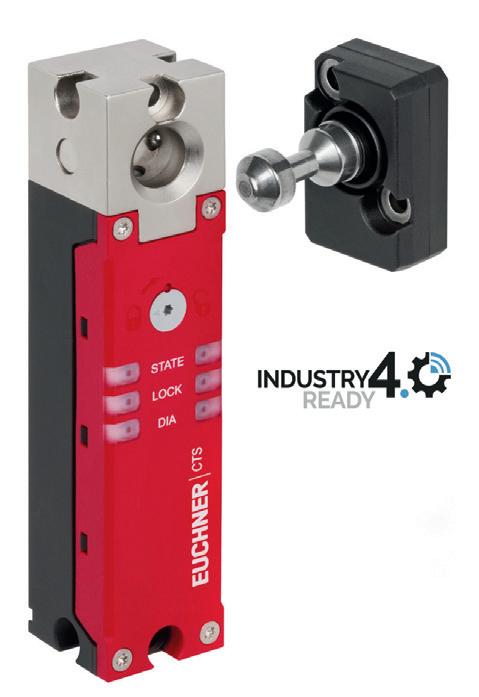
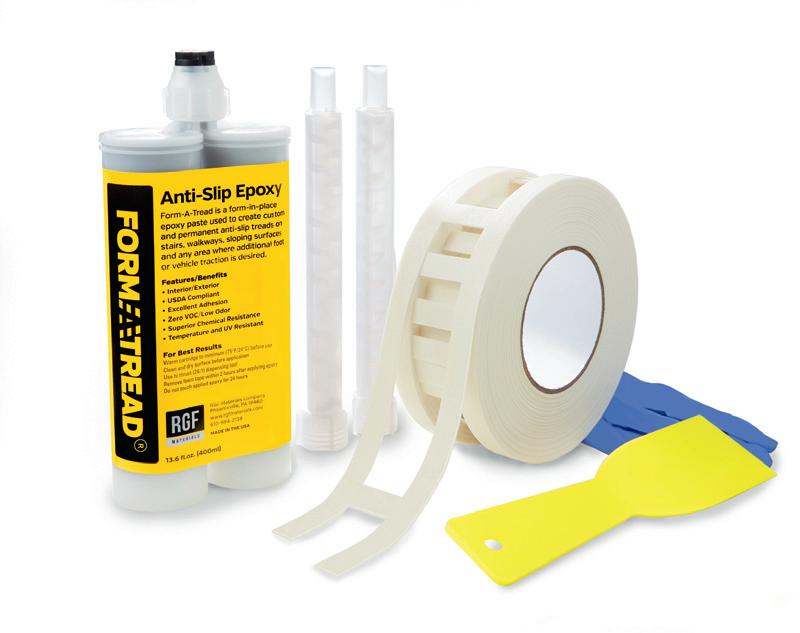
Stair tread line
Form-A-Tread Original is a durable epoxy paste designed to prevent slips and falls and improve safety on hightraffic stairs.
The paste consists of 100% solids that, once applied, provides good stair tread footing and visibility for years without reapplication.
Suitable for high-traffic areas such as warehouse and storage facilities, the product can bond to a range of stair tread surfaces, with embedded aggregate to increase traction. It can be used indoors/outdoors and exposed to chemicals, direct sunlight, harsh weather and temperature extremes.
Easy to apply to stair treads, the product’s kit includes a 400 mL cartridge of material that can produce around 7 to 12 metres of 2.5 cm-wide tread depending on the surface type. A special tool is used to dispense and mix the material at the time of application in the correct ratio.
The kit also includes a stencil system to ensure the tread lines remain clean, neat and parallel.
In addition to straight line treads, instructions such as ‘Exit Here’ or a corporate logo can also be applied using the material and a stencil.
Suitable for steps, curbs and walkways, the product can be applied on sloped and irregular surfaces. It adheres to a wide variety of porous and non-porous surfaces without any priming required.
Form-A-Tread
https://form-a-tread.com/

Safe key system and safety switch
Euchner has released its one-fits-all FlexFunction products, including the CTS safety switch and the CKS2 key system.
The Euchner CKS2 safe key system is simple to integrate into the overall control system and suitable for many applications. By selecting the appropriate RFID key during initial setup, the user decides whether the device should be used as a simple means of starting and stopping machines and processes, as an electronic authorisation system for multiple operators or as a trapped key system, for example. Configuration of the system takes place when the key is ‘taught in’ for the first time using the FlexFunction, and can be reconfigured to perform different functions at any time. The system can be connected to IO-Link using the Gateways. This enables users to implement diagnostic and communication functions, such as determining which key was used to operate the installation. The system is also available as a submodule for the MGB2 Modular safety door protection system, which can open up many other applications. The CTS safety switch features a good locking force, a compact design and flexible mounting options. Measuring only 135 x 31 x 31 mm, it provides a maximum locking force of 3900 N. For hinged or sliding doors or extremely small door radii, three different switch mounting directions and a universal actuator with floating bearing enable it to be used almost anywhere. An extendable escape release can be added at any time. The transponder-based safety switch with guard locking meets all requirements for category 4/PL e according to the EN ISO 13849-1 and EN ISO 14119 standards.
With its FlexFunction, the CTS combines in a single device multiple functions that are otherwise available only in separate variants. This means users can choose whether the CTS operates with or without guard lock monitoring and evaluates the actuator code using a high or low coding level. Functions are selected via the matching actuator.
Industry 4.0-ready with the CTS: in addition to communicating intelligently when connected in series with other EUCHNER devices, the new switch can also connect to IO-Link.
Treotham Automation Pty Ltd
www.treotham.com.au
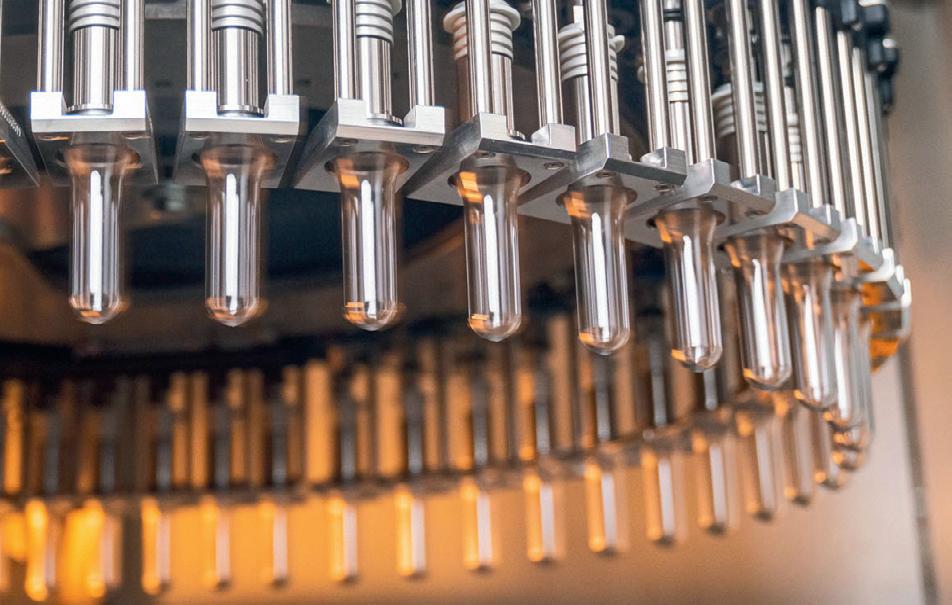
Stretch blow moulder
Krones has now released its fourth generation Contiform stretch blow moulders. Its development involved special attention to environmental compatibility and to further improving efficiency and flexibility. The machine can also be equipped with artificial intelligence (AI).
The distance between the heaters has been reduced, making the heating space more compact. They have also been redesigned with parabolic reflectors, which can reduce energy consumption by up to 11% compared to the previous generation.
The Air Wizard Triple air recycling system uses a three-stage compressed-air recycling process that can reduce compressed air consumption by as much as 20%.
The product has increased sustainability, such as through the use of protective panels made of recycled plastic.
The blow moulder uses a newly developed skip-and-run technology, which monitors the mould-hanger locking device and allows a blowing station that is not locked to pass along the main cam, for instance to eject a defective preform without triggering an emergency stop of the entire machine. That reduces the scrap rate and eliminates the need for operator intervention.
User-friendliness has been increased with the use of largescreen interface with touch technology and visualisation software. Assistant systems guide the operating personnel through the settings, even giving them suggestions to make using the machine more intuitive.
The system uses Cantiloop AI, an automatic process control system. This detects small variation in material distribution in the production of PET containers and automatically adjusts key stretch-blow-moulding parameters in real time, keeping bottle quality high. This factor is particularly important when working with recycled PET, which requires uniform quality and composition to be suitable for use.
Krones Pacific Pty Ltd
www.krones.com
clean-in-place gas blanketing carbonating
STAINLESS STEEL SurfAcE poLIShEd vALvES IdEAL for dAIry procESSINg, BEvErAgE inc MIcro BrEwEry, food, phArMAcEuTIcAL, chEMIcAL pLANTS.
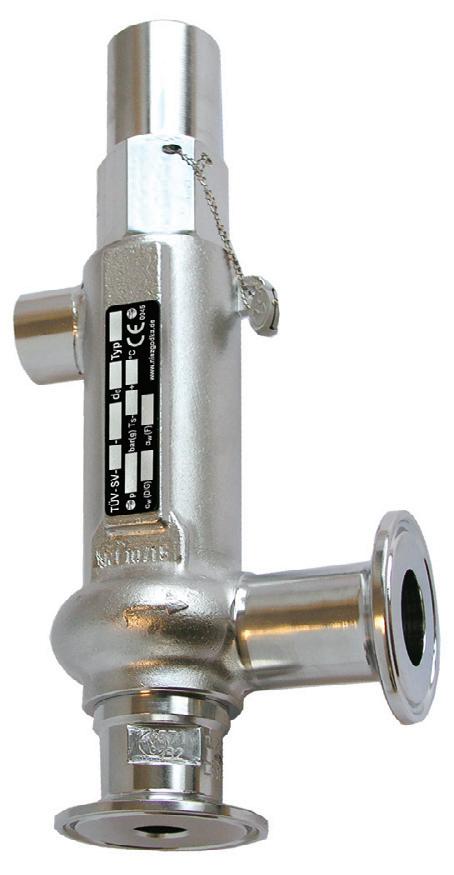
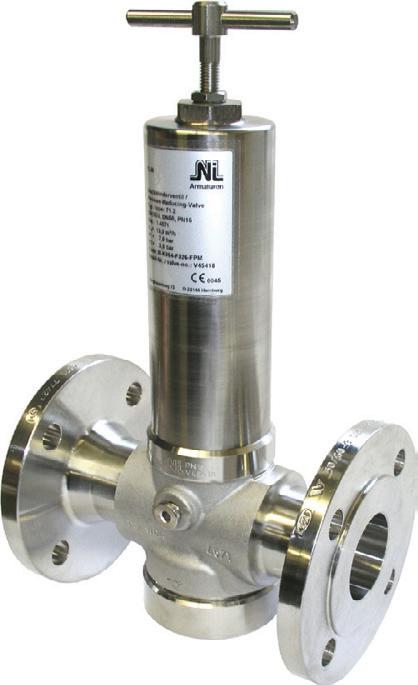
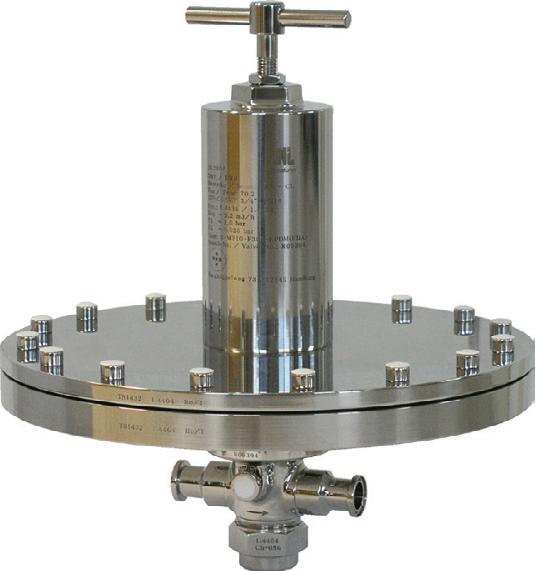
We handle Pressure ®
Tel: (03) 9699 7355
9334/BP&SS-WNIFT
Water recycling system for homogeniser
SPX FLOW, a provider of process solutions for the nutrition, health and industrial markets, has launched a sustainability initiative that reduces the total amount of clean water a homogeniser uses.
The APV Homogenizer Water Recycling System (HWRS) is designed to recycle up to 97% of the water used by homogenisers. Traditionally, a continual flow of water is supplied to homogenisers to cool the transmission oil and lubricate the plungers. This technology recaptures that water, sanitises and chills it, then returns it to the homogeniser.
The product has met the drinking water regulatory standards set by the Pasteurized Milk Ordinance (PMO). It can be used with both new and existing homogenisers made by any manufacturer. It is compact — 21 x 32″ (533.4 x 812.8 mm) — and it has its own control system, including fail-safe features that would default to fresh water without causing downtime, if any problems emerge.
SPX FLOW homogenisers were first introduced in the late 1800s through its APV Rannie and Gaulin brands. The company holds more than 850 patents worldwide and approximately 44% of the patent families are related to sustainability and clean technology.
SPX FLOW TECHNOLOGY AUSTRALIA PTY LTD
www.spxflow.com/au
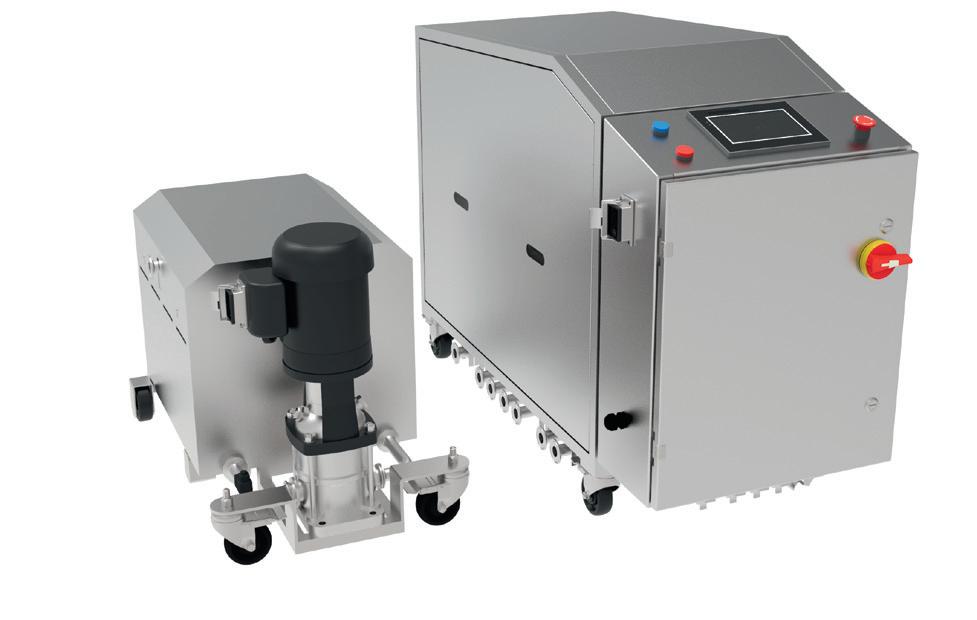
Brewing improved efficiency
An Oregon-based craft brewer, Ninkasi Brewing Company, has boosted its on-time-infull (OTIF) orders from 40 to 94% by adopting technology from OFS.
The brewery makes around 150,000 barrels of beer a year but expanded its operations recently to contract out its production lines to new brewers and producers of canned cocktails, hard seltzers and other drink lines.
As it reconsidered its approach to data capture and efficiency improvement initativies, Ninkasi deployed OFS’s line performance software system, OFS-X, on its packaging line.
This meant it was able to utilise accurate, real-time overall equipment effectiveness (OEE) data and detailed insights into length of production, length of changeover, how well lines were performing, and how different shifts and crews were performing.
These data allowed the brewery to adjust its operations to improve their efficiency. The increase in OTIF orders has
led to better outcomes for customers and other brewers Image credit: Ninkasi Brewing Company using its lines. “Our team on the floor compared all the systems available to us — OFS was the clear, undisputed winner. It was simple to use, made our lives easier, and it supported our drive to grow and diversify while improving our uptime,” said Daniel Sharp, Director of Brewing Process Development. “Prior to OFS, we often had three or four changes to our production schedule a day, an issue OFS identified was usually caused by a packaging delay. It was wreaking havoc on our entire team and our ability to do what we love — make great beer. “Now, we’re down to about five schedule changes per week. We’re using data to assign uptime and run rates for different packages on a crew-by-crew basis, leading to new best practices being discovered.” OFS www.ofsystems.com
